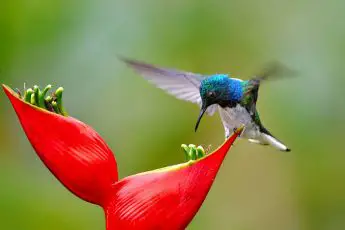Introduction
Quick Navigation
Hummingbird Capitol of North America, as many birders cite to South-eastern Arizona. There, they enjoy hummingbirds all year round. South-eastern Arizona has documented 21 species of these amazing and remarkable birds.
Each year, as more researches are finished, we understand more about hummingbird life and diets. Nevertheless, we find that some people think that hummers can live on nectar only. Nectar gives quick stamina to strengthen their incredibly high metabolic rate and slight else. This is crucial enough that the structure of the bills of hummers have developed in agreement with the flower moulds that they frequent. Often, there is a wide variation of hummingbird bill l and structures among the extra 300 species that live. See more reference
There is also, another important food citation for the hummers. Necessary vitamins, minerals, amino acids, proteins, oils and fats, fibre, and a lot more. All appear from the insects they eagerly eat up, not the nectar. Their choice of insects comprises, but are not restricted to small beetles, true bugs, weevils, flies, gnats, mosquitoes, aphids, mites, leafhoppers, flying ants, and parasitic wasps. Their favourite insect food basis is the spider and harvestmen.
Hummingbirds prefer nectar because of its effective lifespan
The insects that hummers require for a comprehensive diet are caught in an assortment of means. In the past, naturalists believed that hummingbirds use the flowers not just for nectar, but for the insects to launch intense inside the flowers. This may be valid to a specific degree, but it is not the fundamental method of chasing insects.
More frequently, hummingbirds utilize their incredibly sensitive vision to discover and recognize insect prey. This, alongside their unusual hovering skill, tremendous agility and fast speed in flying, permits them to discover insect prey. As they cannot discern into a slight flower tube, they can just blindly grope for insects’ inner flowers.
Besides, how can hummers eliminate insects from the trenches of flowers? The narrow measure of the flower tube staves off the hummer from emptying its bills wide and gripping the insect. Hummingbird bills don’t function like those of flycatchers and other insect feeding birds. Nor do they possess a moist tongue like woodpeckers which could arrest insects. Just like woodpeckers, their tongues are forked, but their forked tongue does not work like pincers to invade and clasp an insect. To depend wholly on insects within the flower would indicate starvation for most hummers.
When hummers flutter around the outside body of a flower or close to tree bark, branches, leaves, along walls and in corners, they are scanning for either cobweb or spider silk to prepare nests in harvesting season or they are scanning for insect prey. Spider webs provide productive hunting grounds for hummers and several of them become helpful at snaring insects from the web without coming to be intertwined themselves. Not just are the insects tangled on the webs taken, but periodically the spider itself comes to be a repast as well. This a hunting method that obliges mastery and vigilance. There have been remarks of hummers becoming sophisticated and imprisoned in large spider webs.
Hummers, much like flycatchers, hook insects on the arm in flight. Have you ever noticed a hummingbird flying into vegetation from its seat or flickering back and forward, scampering for relatively short distances in mid-air, snatching minute insects. In insects like this, altering course frequently and promptly, they catch the slightest and most ingenious insect prey. With predisposition this swift and prey pay little and promptly swallowed, it may be difficult to see them in the system of eating.
Dissimilar to other insectivorous birds that dismantle their prey before consuming, they choose insects little sufficiently to be the whole. Do flycatchers and swallows have large, flat bills and rectal? the air around their mouth to help avert flying insects into their mouths. Swifts, poorwills and nighthawks possess wide bills and large, yawning mouths that help in assembling insects as they glide through the air. Hummers possess none of these benefits. Rather, they reimburse for the narrowness of their bills with their outstanding speed and manoeuvrability in flight. Hummers solely flow their prey until they grab it.
Since they cannot utilize their bills to alter or tear down their prey, when a hummer grabs an insect in flight, the onward movement urges the prone insect so far back into the mouth that it is effortlessly wiped out. Other long-billed birds, like toucans, jerk their heads backwards, throwing away the food back into the throat. Sometimes imprisoned hummers in zoos utilize a relatively identical method, but wild hummers do not depend on this technique of eating.
Bugs for Hummingbirds
Did you know that hummingbirds require to consume bugs for protein? They are considered little hunters and are extremely creative. They have been recognized to extort little bugs out of a spider’s web, eat the spider, and then seize the web to build their own nest.
The hummingbirds like to consume small soft-bodied insects composed of small arthropods such as gnats, spiders, mosquitoes, aphids, caterpillars, and insect eggs. Additional considerable reason to save hummingbirds around is to assist and conquer the gnat society that afflicts several regions in the summer.
The hummingbirds consume every fly and return in a few hours to feast on the next assemblage of fruit flies that uncover the overripe fruit. What a simple way to detect hummers eating insects.
Conclusion
To answer your preliminary question hummingbirds are as vast an insectivore as a nectarivore, which implies that both bugs and nectar create equal half of their diet. In truth, these birds are pendant on bugs for most of the important nutrients. While you can’t entice hummingbirds to your feeder by utilizing dried or dead bugs, you can formulate other modifications in your yard to accomplish your goal.
Hummingbirds are also referred to as opportunistic consumers, as they lie in holdup for a ripe fruit to drop the tree and then promptly suck all the juice out of it. You can furthermore refer to them as thieves since they relax and stay while the woodpecker works hard to exempt the tree’s sap and then sip it when they obtain the chance.

